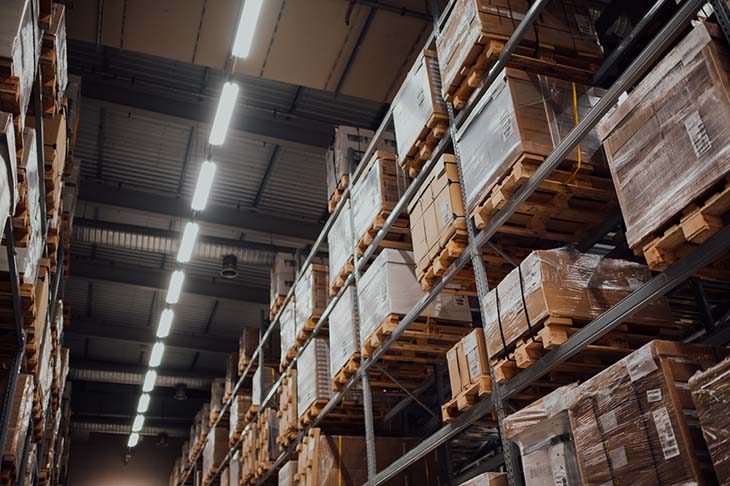Picking is one of the most central functions of any warehouse. However, it’s also prone to error, leading to time-consuming corrections or costly customer service issues. Consequently, warehouse managers must improve order-picking accuracy to achieve their full potential.
Every supply chain is unique, so there’s no magic order-picking accuracy formula that works for every organization. Still, some best practices apply across the board. These five pillars will yield positive results in any warehouse.
1. Better Organization
The first step to improving picking accuracy is to ensure your warehouse is well-organized. If there’s little logic to where items are or it’s difficult to find them on shelves, it’ll be difficult for workers to find the right products. By contrast, better organization makes errors less likely.
Group similar items to make it easier to navigate to specific products. Keep aisles clear and ensure boxes sit neatly on shelves to improve visibility and reduce confusion. If your warehouse deals in perishable goods, use a first-in-first-out (FIFO) inventory system so workers avoid picking expired or unfresh items.
Studies suggest warehouse layout accounts for as much as 75.4% of a facility’s productivity, so better organization helps workers pick orders faster. Specific organizational measures may vary depending on your inventory and shipping patterns, but as long as they’re logical and consistent, they’ll help.
2. Clear Guidance
Employees can make mistakes in even the most well-organized inventories if they don’t know where specific items are within that system. Consequently, easy-to-understand navigation is also crucial to order-picking accuracy.
Pick-to-light systems are an excellent solution. This strategy uses colored lights to direct employees to the products needed for an order. Voice picking is similar but guides workers with auditory directions instead of visual cues.
Voice picking and pick-to-light are most effective when combined with another system, like batch or zone picking. In either case, they ensure employees don’t need to be familiar with the warehouse layout to find items. The more specific and clear the navigational system is, the easier it is to learn, reducing errors.
3. Automation
Pick-to-light isn’t the only technology-centric secret in the order-picking accuracy formula. Automation is a more advanced tech-driven approach, which may make some companies hesitant to embrace it, but it’s difficult to argue with the results.
Robotic picking systems significantly reduce human error by removing people from the equation entirely. They’re far more reliable as a result. Machines can’t get distracted, so as long as they have up-to-date inventory data, they’ll pick the right item every time.
Automated picking solutions come in many forms, including autonomous guided vehicles (AGVs), conveyors, and automated storage and retrieval systems (AS/RS). Which is best depends on your budget, shelving method, physical space and the types of products you store. All these solutions entail high upfront costs, but their accuracy and efficiency make up for it over time.
4. Verification
Verification is easier to overlook than other accuracy-improving methods but is still essential. Errors are possible after automation, organization and better navigation, so you must always check orders before sending them out.
Before packaging an order, an employee should check its contents to ensure it has the correct items. This worker must be someone other than the person who picked the products. If the same individual performed both tasks, they’d be more likely to rush through the verification step, letting mistakes slip through.
Technology can provide more objective verification measures. Consider implementing barcode or RFID scanning, weight checks, or dimension comparisons to enable more quantitative review. This verification may take time, but the resulting costs are lower than that of a lost customer from an incorrect order.
5. Frequent Review
The final piece to the order-picking accuracy puzzle is ongoing review and optimization. You can’t reasonably improve your accuracy if you don’t know where it currently stands. Similarly, you can only tell which adjustments were effective when you measure them.
Start by measuring your current picking error rates. Examine your inventory accuracy, too, as the efficacy of tools like pick-to-light and automation rely on up-to-date records. Remember that just because these seem high doesn’t mean there isn’t room for improvement. Distribution centers often have 99.5% inventory accuracy or higher, but mistakes still happen, especially with large order volumes.
Change one aspect of your picking process at a time and monitor the same KPIs to gauge its efficacy. Taking this slower approach will mean a longer journey to optimization, but it ensures you know why you improve or falter.
Learn the Secrets of the Order-Picking Accuracy Formula
Higher order-picking accuracy means less time lost to corrections and higher customer satisfaction. Considering how costly it can be to lose people’s trust, the costs of more advanced picking systems are more than worth their results.
These five strategies can help any warehouse reach its full picking potential. Take these baseline measures, tailor them to your specific workflow, and carefully monitor and adjust your solution over time for maximum results.























